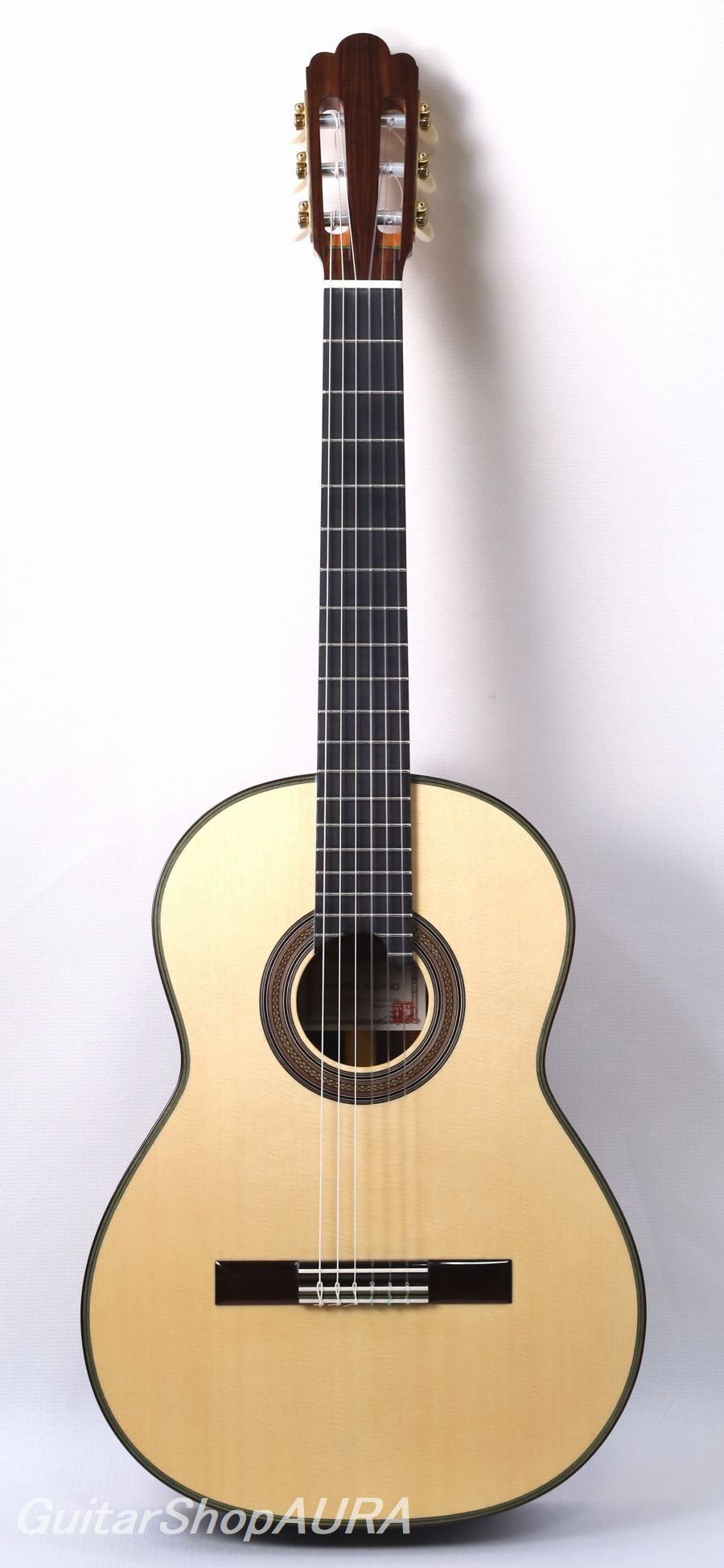
| Instrument | Shunpei Nishino |
| Category | Japanese Classical Guitars 〔New〕 |
| Number/Model | Class35 Hauser model 630mm |
| Scale length | 630mm |
| Country | Japan |
| Year | 2024Year |
| Top | Solid Spruce |
| Side&Back | Solid Indian Rosewood |
| Condition※ | 10 |
| List price | ¥385,000 |
| Price (tax included) | Please Inquire |
| option |
Click to enlarge the photos below
Neck:Cedro
Fingerboard:Ebony
Finish:Lacque:
Tuning Machine:GOTOH
String height:1string 2.5mm/6string 4.0mm
[Profile]
Born in 1947, he began making guitars as a teenager, and in 1964, at the age of 17, he became an apprentice in the workshop of Tsunezaburo Kurosawa. 1969, he established his own workshop in Tokorozawa. Since then, he has continued to make guitars with excellent acoustic balance by utilizing the results of his research on Hauser I guitars, to which he has always been devoted.
The most representative of his characteristics and aesthetics are the Hauser models, which always maintain the beauty of their design, lustrous tone, and superb acoustic balance that make them worthy of being called Hauser models.
In terms of cost performance, this brand can be said to be one of the best in Japan.
[Description]
We are pleased to announce the arrival of a new Hauser Model 35, spruce/indian rosewood, 630mm, 2024, made by Shunpei Nishino. His deep respect for Hauser's tone and construction is truly evident, and the appearance of this model is firmly reminiscent of the original Hauser. 630mm short scale and a slightly smaller body have no acoustic disadvantages, and the player can enjoy the unique sound of this model.
It fits entry- to middle-class players without any difficulty, and its acoustics and playability are exquisitely perfect. The slightly hard and dense sound is very Hauser, and the homogeneous and quick response of each note, the balance in chords, and the pitch accuracy are all excellent. This is a rosewood version, so the sound is thicker and fuller, with a soft and gentle resonance that is different from the harshness and rigidity of the original Hauser.
The basic design is, of course, almost in accordance with the 'Segovia model' by Hermann Hauser I. The strings are moderately tensioned, so it feels easy to play without any stress on the left hand. The treble side has 20 frets.